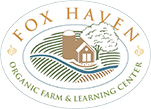Rethinking Grass by Emma Williams
To report back on the June session of Foragers 2, I want to weave together three ideas:
- In the spring I took an online class about plastic pollution through Bennington College. It’s a good class, and anyone can sign up for it.*It can be depressing and overwhelming to confront the magnitude of the plastics crisis, so I came to our June session with a heavy heart.
- Despite being a grown women who owns a house with a lawn, I have never mowed a lawn. It’s my husband’s chore, and I resent how much time it takes. Meanwhile, I have seen various articles about the environmental toll of lawns, how some corporations are shifting away from expansive lawns, and how contentious lawn alternatives can be in suburban neighborhoods. I have read articles like this one describing how to replace a lawn with other plants.** I had come to see grass as an enemy.
- A thread that runs through Joanna Macy’s marvelous book Active Hope is that the climate crisis could, if we allow it, help us find ways of living that are preferable to some of the ways we live now. This may involve finding our way back to earlier ways of being, making and doing. During our June session, Lacey said something like, “Or homes are so toxic now because we try to make them so permanent.” She was referring to the building materials, paints, furnishings, etc., and of course this brings us back to plastics. In the plastics class, the lecturers kept reminding us that while it’s daunting to think about eliminating a substance that has become so ubiquitous, most of human history unfolded without the use for plastics.
Something I like about the foragers group is that it always leaves me with lots to think, but it’s also very action oriented. During our June session at Foxhaven, we:
- Tended an area near the stream called the foragers patch. We pulled out a nonnative invasive species and are replanting it with a similar native species; this is more effective than just removing the unwanted species.
- Built a small check dam to slow the flow of rainwater and prevent erosion of the banks.


- Learned about grasses. I was reminded that grasslands cover roughly half of the Earth’s surface.*** Here’s a picture of Taylor discussing grass while standing in a field of grass, wearing a hat woven from grass:


We talked about the varieties of grass, then learned a simple weaving technique using grasses from the farm. Silence fell over the group as we settled into weaving, and everyone seemed engrossed in their work. I realized that I had conflated grasses with lawn. Lawns can be a problem when fertilizers and extra watering are used to grow a monoculture of a nonnative species which then requires further use of fossil fuels to be mowed to a socially acceptable height. But there’s nothing inherently wrong with grasses. Grasses are a natural resource. They can be woven into vessels that are permanent enough and don’t poison us during the extraction, building and disposal phases.
I was also reminded of the power of handiwork to calm the mind and soothe the spirit.****
Nonetheless, I remain annoyed by how much time and other resources it takes to mow our lawn and am look forward to August, when we will learn about growing food forests.
xc
